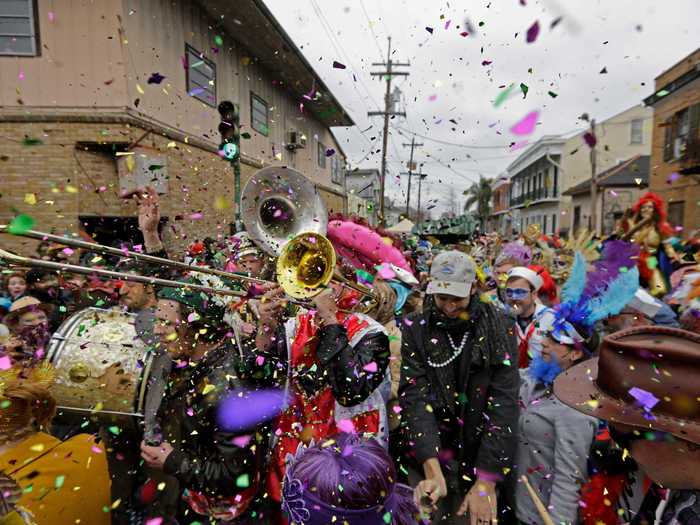
Patrons wait for orders of coffee and beignets at Cafe Du Monde on October 19, 2005 in New Orleans, Louisiana. The famous cafe reopened after being closed for more than a month after Hurricane Katrina hit the Gulf Coast on August 29, 2005.Chris Graythen/Getty Images

Source: The City of New Orleans

Source: Nola

Source: Industry Today, Nola



Source: Nola, Vice, Industry Today

Source: Nola, Industry Today

Source: Industry Today, The New York Times

Source: The New York Times, US News

Source: Associated Press

Source: The New York Times

Source: Associated Press

Source: City of New Orleans, Industry Today

Source: The New York Times

Source: The New York Times

Source: The New York Times
 I spent $2,000 for 7 nights in a 179-square-foot room on one of the world's largest cruise ships. Take a look inside my cabin.
I spent $2,000 for 7 nights in a 179-square-foot room on one of the world's largest cruise ships. Take a look inside my cabin. One of the world's only 5-star airlines seems to be considering asking business-class passengers to bring their own cutlery
One of the world's only 5-star airlines seems to be considering asking business-class passengers to bring their own cutlery Vodafone Idea FPO allotment – How to check allotment, GMP and more
Vodafone Idea FPO allotment – How to check allotment, GMP and more RCRS Innovations files draft papers with NSE Emerge to raise funds via IPO
RCRS Innovations files draft papers with NSE Emerge to raise funds via IPO
 India leads in GenAI adoption, investment trends likely to rise in coming years: Report
India leads in GenAI adoption, investment trends likely to rise in coming years: Report
 Reliance Jio emerges as World's largest mobile operator in data traffic, surpassing China mobile
Reliance Jio emerges as World's largest mobile operator in data traffic, surpassing China mobile

Copyright © 2024. Times Internet Limited. All rights reserved.For reprint rights. Times Syndication Service.